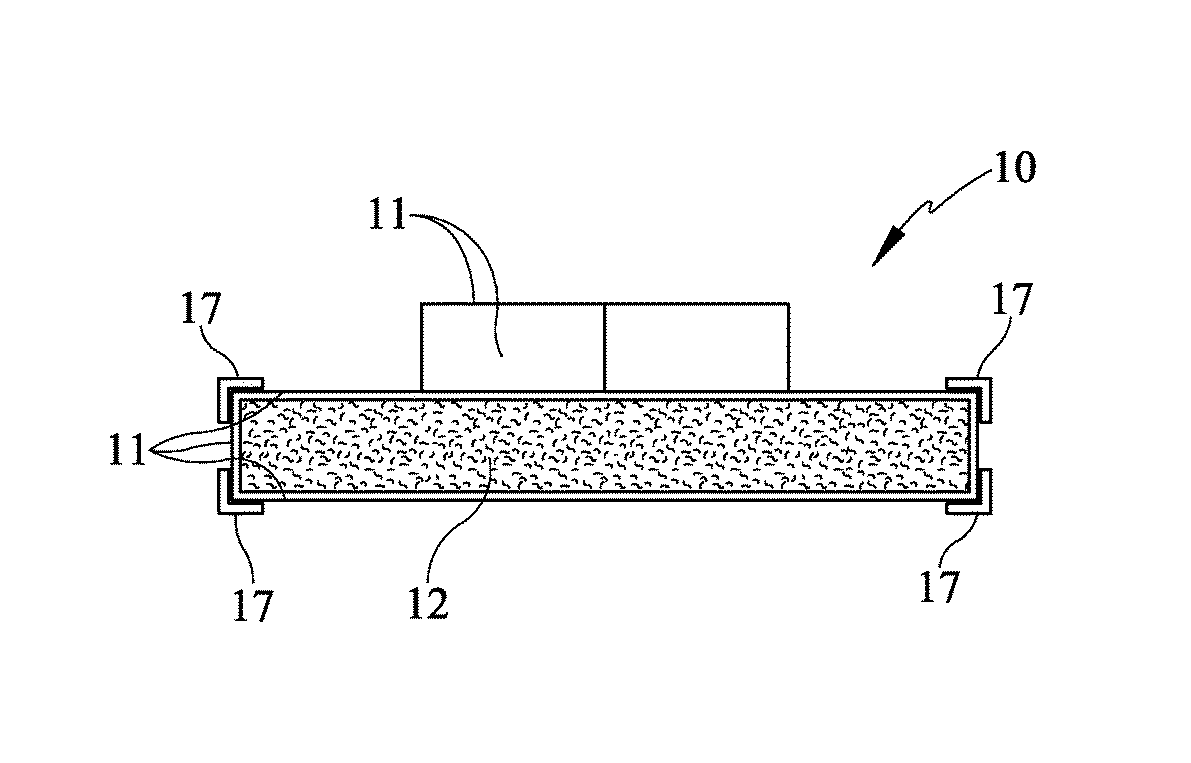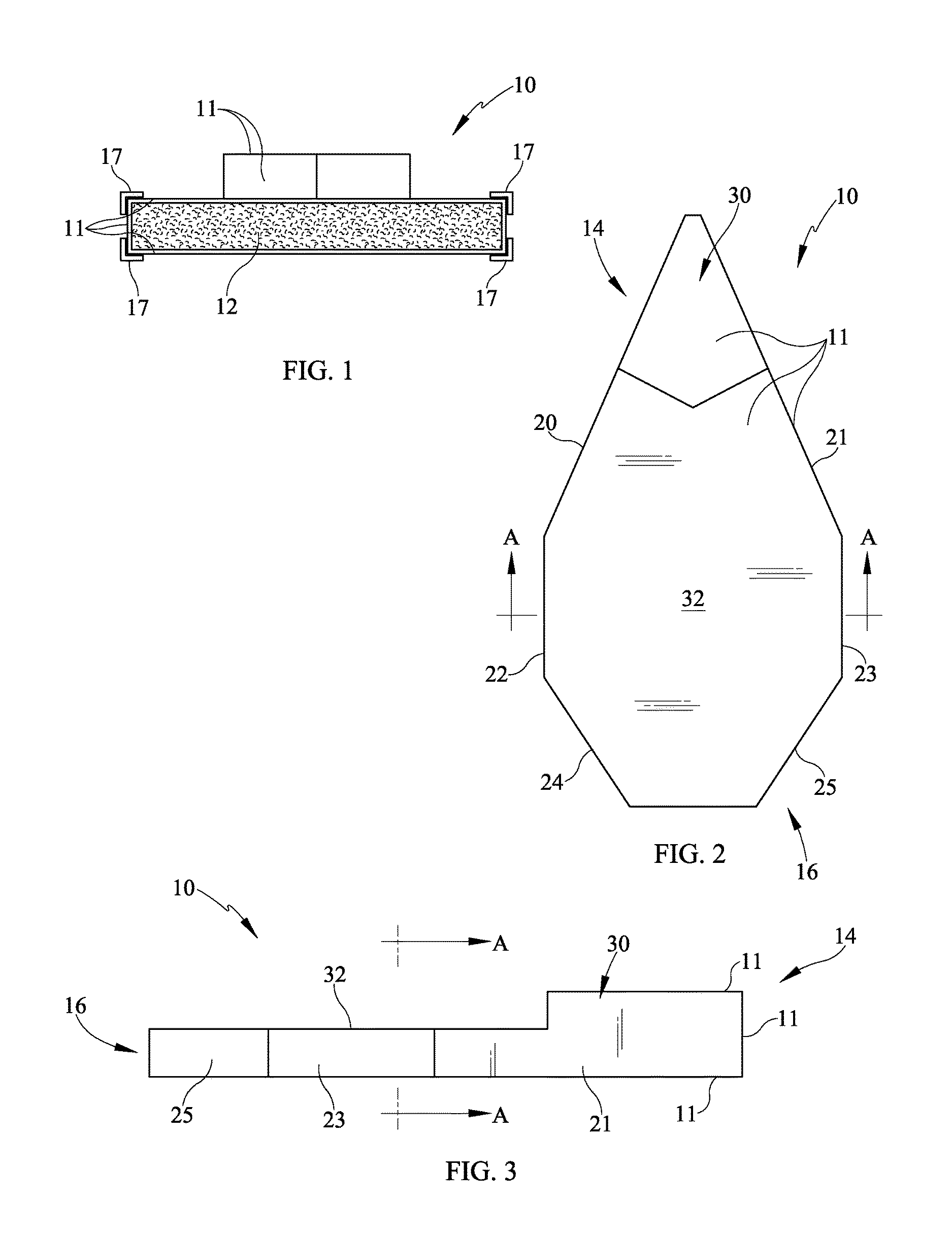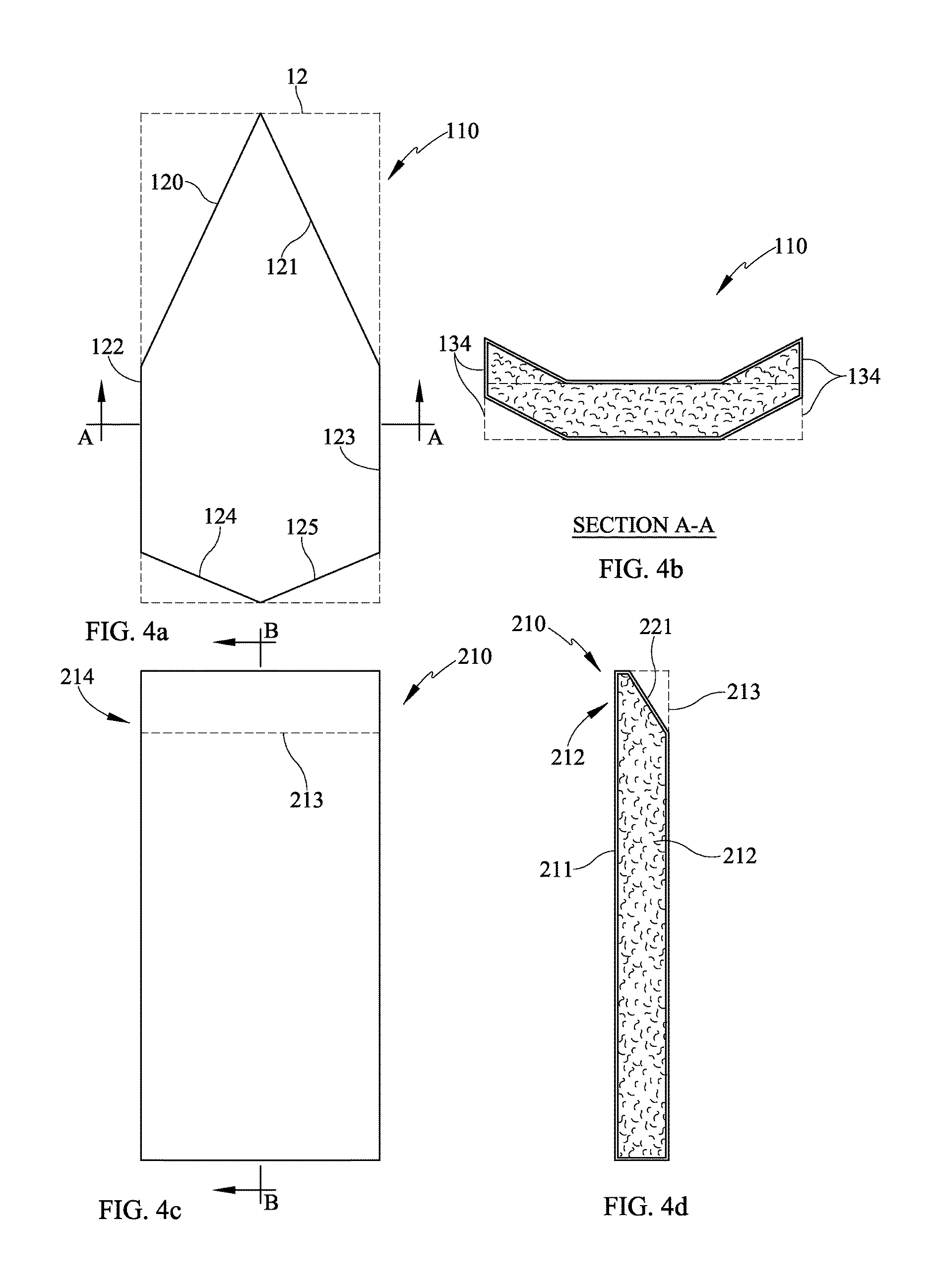Lightweight marine craft and methods thereof
a marine craft and light-weight technology, applied in the field of light-weight marine craft, can solve the problems of increasing cost, increasing labor, and still relatively heavy, and achieve the effect of reducing pull and lateral resistance of the sailboat hull
- Summary
- Abstract
- Description
- Claims
- Application Information
AI Technical Summary
Benefits of technology
Problems solved by technology
Method used
Image
Examples
first embodiment
[0039]According to FIG. 5a, a through-deck rod 40 may be utilized. In this embodiment, the hull 10 shown formed by the core 12 and includes a skin 11 wrapped about the core 12. In this embodiment, a through-deck threaded rod 40 extends through the skin 11, core 12 and through the opposite side of the hull 10. The threaded rod 40 is defined by a screw or other such fastener and includes a washer 42 at upper and lower ends thereof to engage the skin 11, or alternatively the core 12. The rod 40 may be threaded such that a nut 44 may be applied at the lower side of the hull 10 and against the washer 42. An insert or sleeve 46 may extend through the core 12 and provide a pathway for the rod 40 to pass there through. The insert 46 may be hollow in shape to allow passage of the rod 40 and may have various cross-sectional shapes. A plate 150 may be disposed on the upper surface of the core 12 or skin 11 and beneath the upper washer 42 to mount other items, such as masts, cables, ropes or sh...
second embodiment
[0040]Referring now to FIG. 5b, a second embodiment for connecting fittings is depicted in side section view. In this embodiment, a plate 150 is fastened to the core 12. The fasteners 140 may be of the self-tapping variety that extend into the core 12 and retain the plate 150 against the hull 10. The plate 150 further comprises at least one fastener 146 to retain a fitting 142 on an upper surface of the plate 150. The fitting 142 allows for retaining of various structures including tube, cable or rope structures by providing connection to the hull 10. These attachments and related methods allow attachment of fittings and equipment to the hull 10.
[0041]Referring now to FIG. 5c, a further alternative embodiment is depicted. In this embodiment, the hull 10 is again shown defined by a core material 12 covered on outer surfaces by a skin 11. The core 12 includes a hull hole 13 which is lined by a sleeve or insert 46. The hull hole 13 and sleeve 46 allow for passage of a rope, cable, zip-...
PUM
| Property | Measurement | Unit |
|---|---|---|
| sizes | aaaaa | aaaaa |
| sizes | aaaaa | aaaaa |
| sizes | aaaaa | aaaaa |
Abstract
Description
Claims
Application Information
 Login to View More
Login to View More - R&D
- Intellectual Property
- Life Sciences
- Materials
- Tech Scout
- Unparalleled Data Quality
- Higher Quality Content
- 60% Fewer Hallucinations
Browse by: Latest US Patents, China's latest patents, Technical Efficacy Thesaurus, Application Domain, Technology Topic, Popular Technical Reports.
© 2025 PatSnap. All rights reserved.Legal|Privacy policy|Modern Slavery Act Transparency Statement|Sitemap|About US| Contact US: help@patsnap.com



